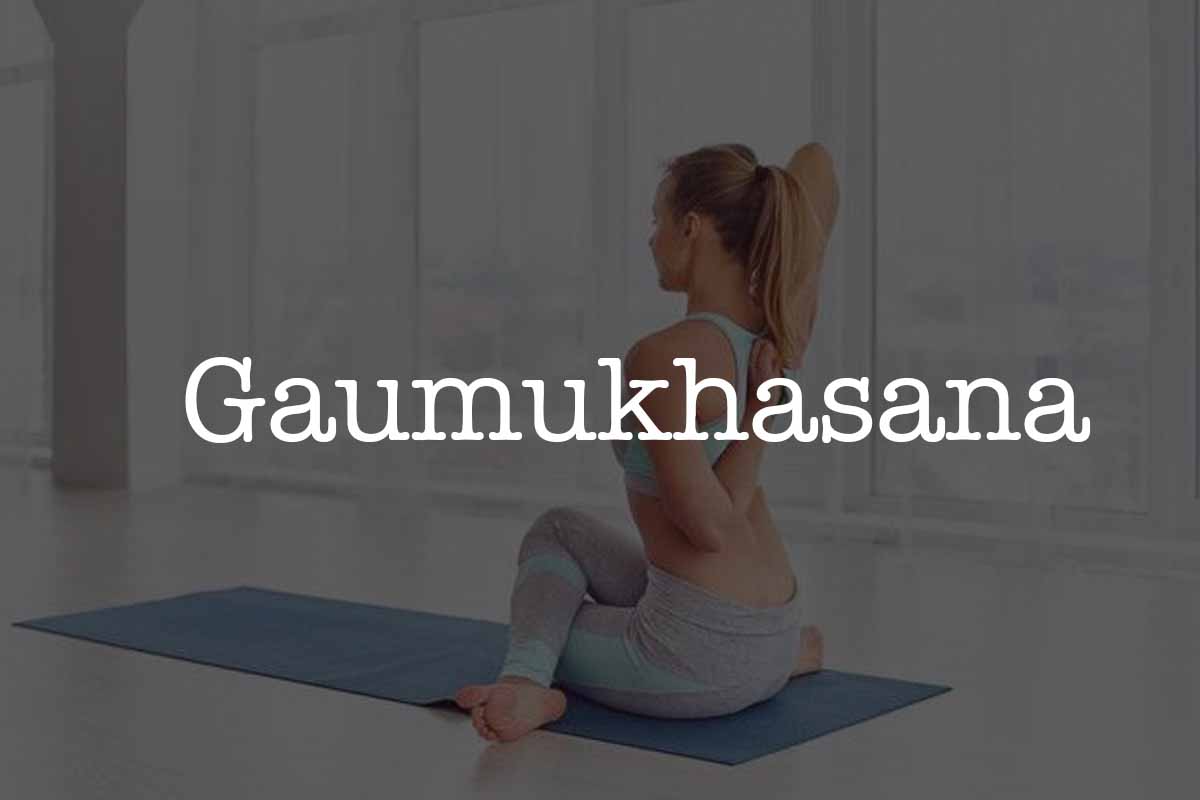Gaumukhasana helps in releasing pressure from joints and muscles, relieving the practitioners from chronic pains. Regular practice of this asana significantly improves the movement of joints. Stretching of hands in this pose stimulates the body to release Endorphins, which reduces pain, stress and anxiety.
Etymology of Gaumukhasana
The word “Gaumukhasana” is the combination of three words of Sanskrit- “Gau” Meaning cow, “Mukh” Meaning Face and “Asana” meaning pose or posture. The posture has been known by this name as the body posture of the practitioner, while performing this asana, resembles to the mouth of a grazing cow.
Performing Gaumukhasana
1. Sit on the floor with your legs stretched straight ahead.
2. Stack your right knee on the top of the left knee.
3. Bend your right leg in such a manner so that the heel of the bent leg moves beside your left hip.
4. Bend your left leg so that the heel of the right leg moves beside your right hip.
5. While keeping your upper body straight, balance your body on the sitting bones.
6. Raise the left arm above your head and move it towards the Centre of Vertebral column. The left arm must be close to your head
7. Move the right arm to the side and rotate it inwards (taking it parallel to the spine), fingers pointing towards the sky.
8. Inhale deeply. while exhaling, move your right arm towards the center of the vertebral column while keeping it parallel to the spine.
9. Try to hold hands or wrists, if possible, behind the back. People who are unable to hold hands at their first attempt, can try to hook fingers. People having difficulty holding hands or fingers can use a strap. with regular practice, you would be able to hold your hands.
10. Hold this position for 5-10 Seconds. Now unlock your hands and return to normal sitting position with your legs stretched ahead. repeat this asana, keeping your right leg on the top and right arm over your head.
Precaution for beginners
1 Do not over-stretch your arms in order to perform the perfect pose in the first go. People with tight shoulders can wrap a stretch in the arm that is going behind your head and hold the other end of the strap from the other hand.
2 The backbone must always be kept straight while performing Gaumukhasana.
3. People having any kind of injury in the knees, hips, shoulders and/or neck must not perform this asana
Benefits of Gaumukhasana
1. This posture induces the movement of all body joints.
2. This posture stretches arms, Thorax, shoulders, Chest, hips thighs and ankles, thus increasing muscle flexibility
3. This asana can Help in improving the health of people suffering from stiff shoulders, Sciatica.
4. Regular practice can also help in reducing anxiety and stress.
